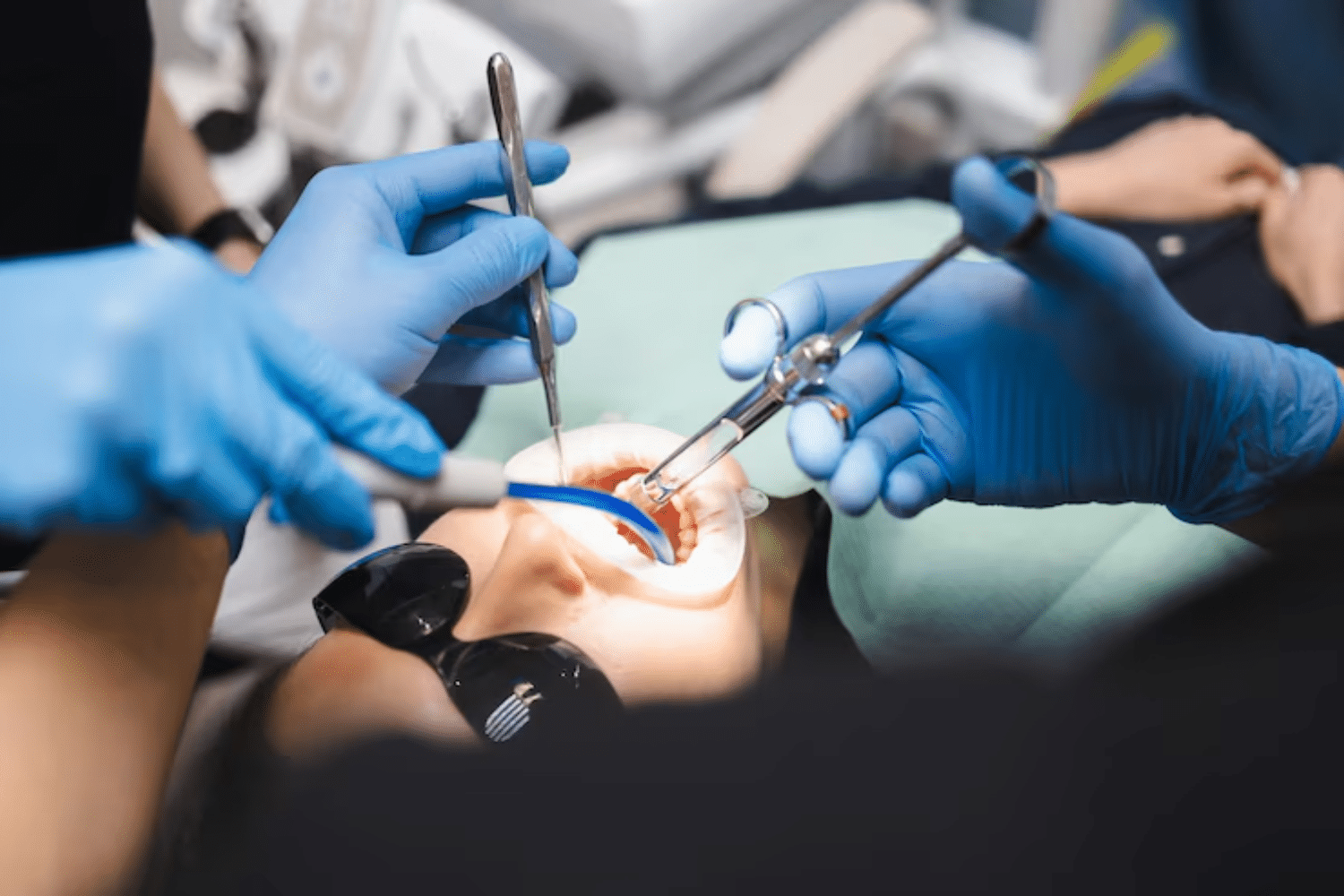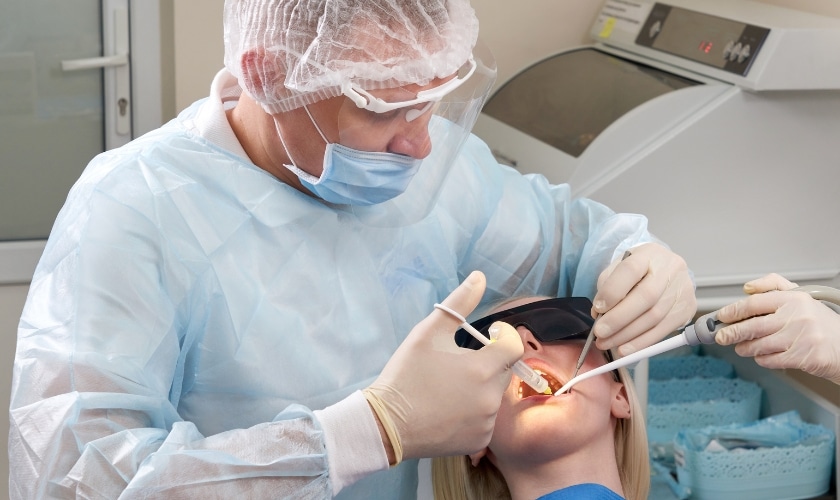
What Kind Of Sedation Is Used For Tooth Extraction?
Tooth extraction is a common dental procedure that can cause significant anxiety and discomfort for many patients. To alleviate these concerns, various sedation methods are used to ensure a more pleasant and pain-free experience. Understanding the types of sedation available can help you make an informed decision and ease your apprehensions about the procedure. This comprehensive guide explores the different kinds of sedation used for tooth extraction, their benefits, and what to expect during the process.
Understanding Tooth Extraction
Tooth extraction involves removing a tooth from its socket in the bone. This procedure is necessary for various reasons, including:
- Severe Tooth Decay: When a tooth is too damaged to be repaired by a filling or crown.
- Gum Disease: Advanced periodontal disease can loosen teeth, necessitating extraction.
- Impacted Teeth: Teeth that are blocked from erupting properly, often wisdom teeth.
- Overcrowding: In preparation for orthodontic treatment, some teeth may need to be removed to align the remaining teeth properly.
- Infection: An infected tooth that does not respond to antibiotics may require extraction to prevent the spread of infection.
The extraction process can range from a simple procedure for visible teeth to more complex surgery for impacted teeth. Regardless of the complexity, sedation plays a crucial role in managing pain and anxiety.
Types of Sedation Used in Tooth Extraction
Several sedation methods can be used during tooth extraction, each with different levels of consciousness and pain control. The type of sedation chosen depends on the patient’s anxiety level, the complexity of the extraction, and the dentist’s recommendation. The main types of sedation used in tooth extraction include:
- Local Anesthesia
- Nitrous Oxide Sedation (Laughing Gas)
- Oral Sedation
- Intravenous (IV) Sedation
- General Anesthesia
Let’s delve into each type to understand their benefits, how they work, and what to expect.
Local Anesthesia
Local anesthesia is the most common type of sedation used in dental procedures, including tooth extraction. It involves injecting an anesthetic agent, such as lidocaine, directly into the tissue around the tooth to numb the area.
Benefits:
- Effective Pain Control: Local anesthesia effectively blocks pain in the targeted area.
- Patient Remains Conscious: Patients remain fully awake and can respond to instructions.
- Quick Recovery: The effects wear off relatively quickly, allowing patients to resume normal activities soon after the procedure.
What to Expect:
- Numbing Sensation: The injection site will become numb within a few minutes.
- Mild Discomfort: There might be a slight prick or sting when the anesthetic is administered.
- Awareness: You will be aware of pressure and movement but should not feel pain.
Nitrous Oxide Sedation (Laughing Gas)
Nitrous oxide sedation, commonly known as laughing gas, is a mild sedative inhaled through a mask placed over the nose. It is often used in combination with local anesthesia to provide relaxation and ease anxiety.
Benefits:
- Rapid Onset: Effects are felt within minutes of inhalation.
- Adjustable Dosage: The level of sedation can be easily adjusted during the procedure.
- Minimal Side Effects: Nitrous oxide is generally safe with few side effects.
- Quick Recovery: Patients recover quickly and can usually drive themselves home.
What to Expect:
- Relaxation: You will feel relaxed and may experience a sense of euphoria.
- Lightheadedness: Some patients feel lightheaded or tingling in their arms and legs.
- Normal Consciousness: You will remain awake and able to communicate with the dentist.
Oral Sedation
Oral sedation involves taking a sedative pill, usually a benzodiazepine like diazepam or triazolam, before the procedure. This method provides a deeper level of sedation compared to nitrous oxide.
Benefits:
- Ease of Use: Simply taking a pill is straightforward and non-invasive.
- Anxiety Reduction: Helps significantly reduce anxiety and fear.
- Amnesia Effect: Many patients have little to no memory of the procedure.
What to Expect:
- Drowsiness: You will feel drowsy and relaxed but still conscious.
- Limited Memory: You may have little recollection of the procedure.
- Accompanied Travel: You will need someone to drive you to and from the appointment due to lingering drowsiness.
Intravenous (IV) Sedation
Intravenous (IV) sedation involves administering sedative drugs directly into the bloodstream through a vein. This method provides a deeper level of sedation, often referred to as “twilight sleep.”
Benefits:
- Rapid Sedation: The effects are almost immediate.
- Controlled Sedation: The dentist can control the level of sedation throughout the procedure.
- Deep Relaxation: Patients experience a high level of relaxation and often have no memory of the procedure.
What to Expect:
- Insertion of IV: A needle will be inserted into a vein, typically in your arm or hand.
- Deep Sedation: You will be deeply relaxed, and some patients may fall asleep.
- Close Monitoring: Your vital signs will be closely monitored to ensure safety.
- Post-Sedation Care: You will need someone to accompany you home and stay with you until the sedation wears off.
General Anesthesia
General anesthesia is the deepest form of sedation, rendering the patient completely unconscious. It is typically reserved for very complex or extensive dental procedures.
Benefits:
- Complete Unconsciousness: You will be completely asleep and unaware of the procedure.
- Pain-Free: No pain or discomfort is felt during the procedure.
- Ideal for Severe Anxiety: Beneficial for patients with extreme dental anxiety or phobia.
What to Expect:
- Pre-Procedure Fasting: You will need to fast for a certain period before the procedure.
- Anesthesia Administration: An anesthesiologist will administer the drugs and monitor your vital signs.
- Recovery Time: Recovery can take several hours, and you will need someone to drive you home and stay with you.
Choosing the Right Sedation Method
Selecting the appropriate sedation method depends on several factors, including:
- Anxiety Level: Patients with higher anxiety may benefit from deeper sedation methods.
- Procedure Complexity: More invasive procedures may require stronger sedation.
- Medical History: Your dentist will consider your medical history and any potential risks associated with different sedation methods.
- Personal Preference: Some patients prefer to be fully conscious, while others prefer not to remember the procedure.
Preparing for Sedation
Proper preparation is crucial to ensure a safe and successful sedation experience. Here are some general guidelines to follow:
- Consultation: Discuss your sedation options with your dentist and provide a complete medical history.
- Fasting: Follow any instructions regarding fasting before the procedure, especially for oral, IV, and general anesthesia.
- Transportation: Arrange for someone to drive you to and from the appointment, particularly if you are receiving oral, IV, or general anesthesia.
- Post-Procedure Care: Plan to rest and avoid strenuous activities for the rest of the day.
Aftercare and Recovery
Post-sedation care is essential for a smooth recovery. Here are some tips to follow after your tooth extraction:
- Rest: Take it easy for the rest of the day and avoid any strenuous activities.
- Hydrate: Drink plenty of water to help flush the sedative drugs from your system.
- Pain Management: Follow your dentist’s instructions for managing pain and discomfort.
- Follow-Up: Attend any follow-up appointments to ensure proper healing.
Tooth extraction can be a daunting experience, but understanding the various sedation options can help ease your anxiety and ensure a comfortable procedure. Whether you opt for local anesthesia, nitrous oxide, oral sedation, IV sedation, or general anesthesia, each method offers unique benefits tailored to different levels of comfort and relaxation.
By consulting with your dentist and considering your personal needs, you can choose the sedation method that best suits you. Proper preparation and aftercare are also crucial to ensure a smooth and speedy recovery. With the right sedation, tooth extraction can be a manageable and pain-free experience, helping you maintain your oral health with confidence.
FAQs
1. Is sedation safe for tooth extraction?
Yes, sedation is generally safe when administered by a trained professional. Your dentist will review your medical history and monitor your vital signs throughout the procedure to ensure your safety.
2. How long does the sedation effect last?
The duration of sedation effects varies depending on the type used. Local anesthesia wears off within a few hours, while oral and IV sedation may have lingering effects for several hours. General anesthesia requires a longer recovery period.
3. Can I drive myself home after being sedated?
No, you should not drive yourself home after receiving oral, IV, or general anesthesia. Arrange for someone to accompany you to and from the appointment.
4. Will I feel any pain during the tooth extraction?
With appropriate sedation, you should not feel pain during the extraction. Local anesthesia effectively numbs the area, and additional sedation methods help reduce anxiety and discomfort.
5. How should I prepare for sedation?
Follow your dentist’s instructions regarding fasting and medication use before the procedure. Arrange for transportation and plan to rest after the appointment.



